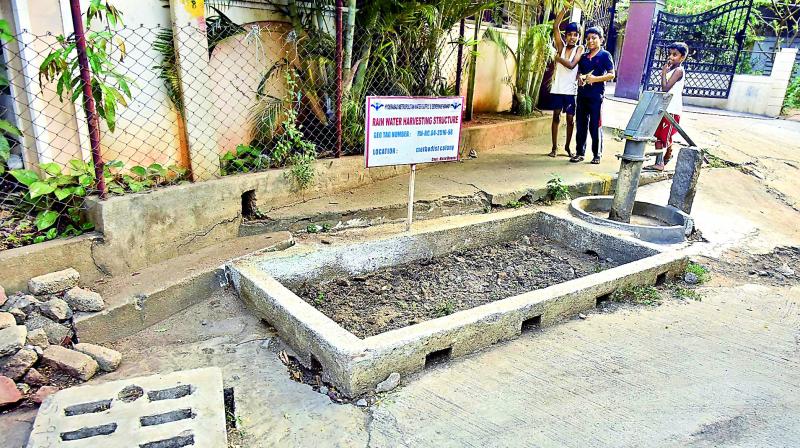450 km-long stormwater drain needed to save Hyderabad
Infrastructure to cost Rs 2,400 Cr, says JNTU experts.

Hyderabad: In a bid to save the city from inundation, the Greater Hyderabad Municipal Corporation (GHMC) needs to additionally construct a 450 kilometre-long stormwater drain, about 3 lakh rain water harvesting pits and 636 water tanks at an estimated cost of Rs 2,400 crore, according to a study by JNTU experts.
The civic body asked JNTU experts to conduct a comprehensive study and provide a permanent solution to save the city from urban flooding.
The outcome of the study proposed additional 450 km of stormwater drain in the central median, 2,70,350 rain water harvesting structures by households under social responsibility, 17,767 rain water harvesting structures on government land and 636 water tanks to be constructed on build–operate–transfer (BOT) basis. The initial indicative cost of the stormwater drain is about Rs 400 crore, which excludes the cost of reverse cambering the roads, land acquisition and rain water harvesting structures which may cost around Rs 2,000 crore.
A total of 200 engineers worked to find a permanent solution to the problem. The recommendations included geometric sensitisation, pavement strengthening, constructing 400 underground tanks in all public parks, government land, offices and constructing 2,70,350 lakh rain water harvesting pits in 625 square kilometres. Besides geometric sensitisation, experts also suggested strengthening the pavement and stormwater drains beneath them. The estimated cost of executing the recommendations would be Rs 2,400 crore which had to be taken in two phases.
Most of the water logging points were found along 450 kilometres of arterial roads and in order to prevent the excess rain water coming onto the roads, 400 locations have been identified on government land, offices to construct 400 underground tanks/ponds. Water collected would not only be useful for gardening but also serve drinking water needs if properly treated. A mechanism will be developed for self-sustainable bore wells at low lying areas which would increase the ground water levels in the city.
A senior GHMC official said that the only radical recommendation by JNTU has been to lay reverse camber roads, which would allow the water to flow in the drain constructed at the central median.
However, the official said that laying of reverse camber would violate Indian Roads Congress guidelines. He said that the recommendation given by the JNTU experts were technically good at the theory level but to adapt them on the ground level would be a challenging task since it involved land acquisition and huge funds.

